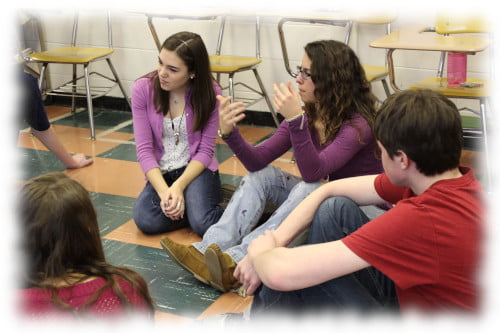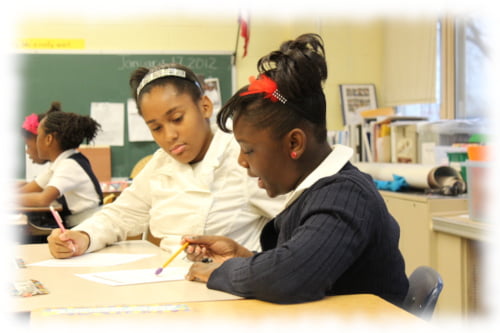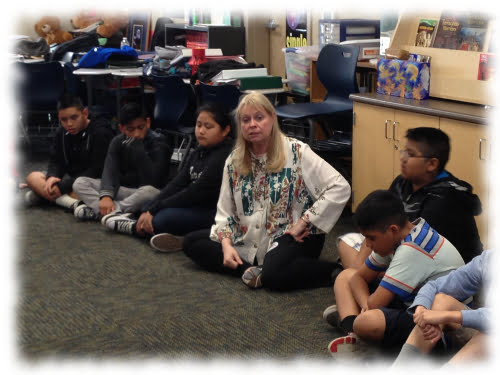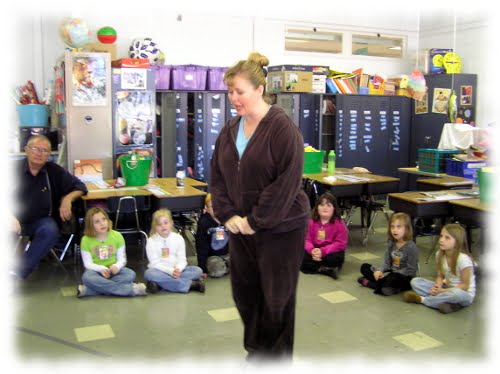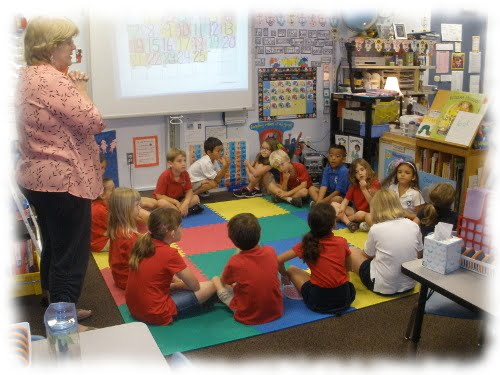Classroom management and student engagement often begin with selecting the right story for your class. In my curriculum, younger students start out by playing the major characters all together. Then, as a next step, I place them in groups where they learn how to divide the roles amongst themselves – See Negotiation Strategies. Because of this, it is crucial to carefully select the best stories for each stage of development. This article covers stories where students must negotiate roles within their groups. Here are a few of my thoughts. I’d love to hear yours, and please send us the titles of your favorite drama stories!
How do we select stories and plays for drama that capture the interest of every student? First, we must ensure the story is age appropriate, and that it has the right number of characters to foster great collaboration. Taking that into account, I have also found that some students are unwilling to take on roles that make them uncomfortable. When they feel uncomfortable they are more apt to act out, be uncooperative, and provide difficulties for their group or the class. This leads to complex management issues both in the drama and the classroom.
To avoid this, here’s what I suggest:
Choose a story with more active than passive characters. Young actors like to play active characters. Active characters are instrumental to the plot and are involved in the conflict. They are often the protagonist, the antagonist or a character that is instrumental in resolving the conflict/problem. The key word here is “action.” The active characters are moving the plot along – taking some type of action.
There are stories without a great deal of action, making all characters more passive, like Goodnight Moon by Margaret Wise Brown, and there are stories with all active characters like Who’s In Rabbit’s House? by Verna Aardema. However, many stories have both active and some passive characters like The Paper Bag Princess by Robert Munsch. In the last example, the prince is a passive character who has little to do with the action, and the princess and the dragon are much more active. When there is a mixture of active and passive roles like this, sometimes the more aggressive or confident students prevent others from taking the active roles. Students who get cast in a passive role when they desire an active role are more likely to be disruptive.
Two solutions: one, select stories that have only active characters; and two, since this is not always possible, ask students who have traditionally played an active role to take on a passive role.
I might say something like:
“All actors who played ______________ in our last drama, I am going to ask you today to play __________ when your group meets to decide roles. Raise your hand if you played _______________ in that drama. Keep your hand up if you agree to take on the role of _____________ today. That’s perfect and thank you.”
Doing this before groups gather is called a “contract,” and heads off any potential management issues that could arise within the group.
Choose a story with neutral characters. Neutral character stories are ones where you don’t have to worry about roles being determined by gender, ethnicity, or physical traits. In the classroom it is important to provide stories with roles that everyone feels comfortable playing. This way there is joy in the playing, which will always foster greater engagement. If you have noticed that students are stuck in casting each other or themselves based on traditional roles, then you might select animal stories such as fables or fantasy stories that have nonhuman characters. These stories are excellent options because they provide ample roles that are both active and neutral.
You might also build instructional strategies into your curriculum to help them make less obvious casting choices. Begin with something like Jack and the Beanstalk, and discuss – don’t lecture – on how actors who are small might take on the giant, for instance. Use instruction, examples, and modeling to move your class away from typecasting each other or themselves.
Choose stories everyone can play. Actors who have physical and mental challenges also enjoy participating in active roles. Some students in the class might not be aware of this. Use instructional brainstorming with the group to generate ideas of how to incorporate everyone. In one class I had a young lady who could not speak and was in a wheel chair often operated by as assistant. For one drama, she chose to be the major central character. Her teammates were able, with her permission, to move her chair. They became her voice when needed, and she used simple hand movements, vocal sounds, and facial expressions to communicate, as her team accompanied her around the playing space. This opened a world of possibilities for her throughout the semester. Don’t let challenges create barriers. Removing barriers for one individual creates a safe place for everyone.
Choose a story without a horrible villain or bully. Students love to read and listen to stories with a character “they love to hate.” But when it comes time to play the role, they shy away. There can be many reasons for this: they don’t feel safe among their classmates, they are not ready to utter mean words to someone else, the role feels too close to something in their personal life, or the character is too scary. Often, after introducing a story, I discuss the characters and see if there are those willing to take on the darker roles. I also might put up a “role on the wall” (a large outline of the character no wants to play) and suggest that groups use that image to represent the character. That way, students can take turns being the voice of the character, and no one has to play the role.
In my work, I introduce a process of collaboration that allows young people to work as a team to select their own characters in a manner that is fair, fast, and collegial. I observe the groups as they participate in that process of negotiation and note who selects which character. This process allows me to plan and select stories more thoughtfully.
Choose carefully any written story that students will dramatize. Your students might not receive many opportunities to act out stories, so make each selection as memorable as possible. Each story should be dramatic, with vibrant characters that everyone wants to play. Select a story for its content, message, dynamics, and quality. Enacted stories that are most memorable and have the greatest impact on student learning are ones about interpersonal interaction, connections to the broader world, and the power of human choice. All stories are not equal; good stories will support your teaching, the quality of your program, and the atmosphere of your classroom.


